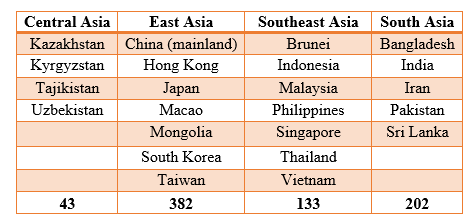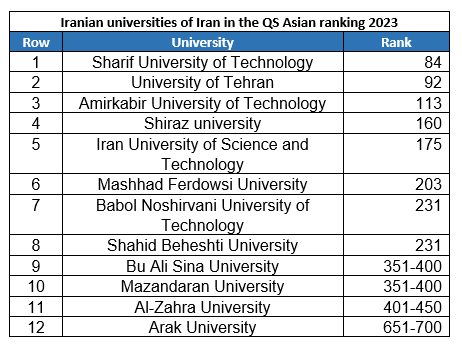ISC Republished
QS World University Rankings 2023 Released
12 Iranian universities in the list for the first time
Office of International Scientific Cooperation, Nov. 17. 2022
The 15th edition of the QS World University Rankings released. Through this, Asia features 757 institutions – up from 687 last year and making it the biggest rankings for this region yet. The major locations represented include China Mainland (128 institutions), India (118), Japan (106) and South Korea (88), accounting for more than a half of all ranked institutions.
The difference between this year's ranking and previous years is the regionalization of Asian countries based on the four regions of Central Asia, East Asia, Southeast Asia, and South Asia. In this ranking, the ranking of the university can be seen based on regions and in general.

The six indicators that determine the QS World University Ranking 2023 are:
Academic reputation – Accounting for 40 per cent of the overall score, academic reputation looks at the teaching and research quality at the world’s universities. We collate over 130,000 expert opinions from the higher education space, creating the largest survey of academic opinion in the world.
Employer reputation – We know that students want to graduate with the skills and knowledge required for the employment market. We assess how institutions prepare students for successful careers, and which institutions provide the most competent, innovative, and effective graduates.
Faculty/student ratio – This indicator recognises that a high number of academics per student reduces the teaching burden and creates a more supportive student experience. We assess how institutions provide students with meaningful access to lecturers and tutors.
Citations per faculty – We measure university research quality with a citation per faculty metric, taking the total number of academic citations in papers produced by a university in a five-year period.
International student ratio & International faculty ratio – A highly international university creates a number of benefits. It demonstrates the ability to attract quality students and staff from across the world, and it implies a highly global outlook. Strong international institutions provide a multinational environment, building international sympathies and global awareness.
The ranking of Iranian universities in the QS World University Rankings: Asia 2023
In the QS World University Rankings: Asia 2023, there are 12 universities from Iran, while Sharif University of Technology, Tehran University and Amir Kabir University of Technology were ranked 84, 92 and 113. The ranking of other Iranian universities is shown in the table below.

The top 10 institutions in the QS World University Rankings: Asia 2023
1. Peking University
2. National University of Singapore (NUS)
3. Tsinghua University
4. The University of Hong Kong
5. Nanyang Technological University, Singapore (NTU)
= 6. Fudan University
= 6. Zhejiang University
8. KAIST (Korea Advanced Institute of Science and Technology)
9. Universiti Malaya (UM)
10. Shanghai Jiao Tong University

Your Comment :